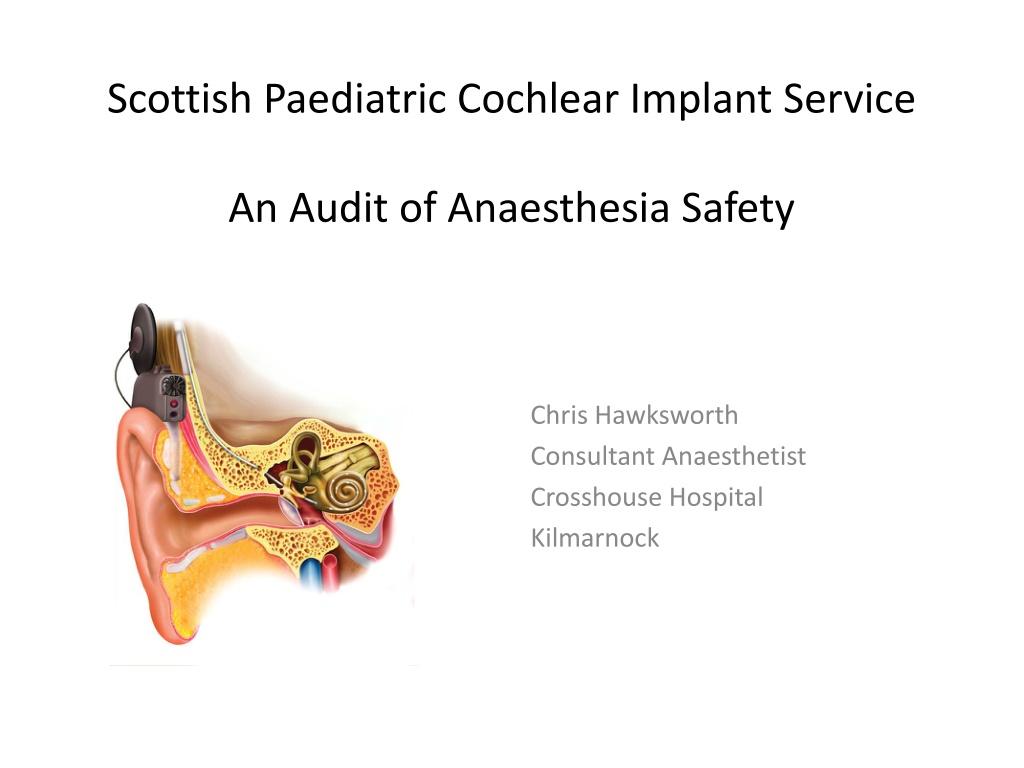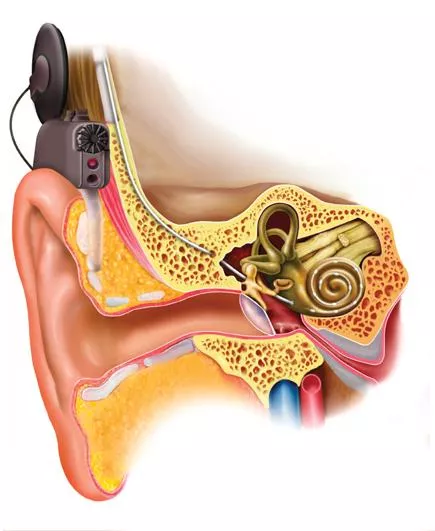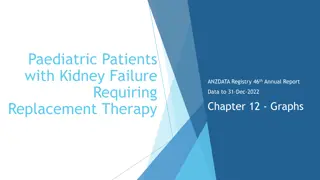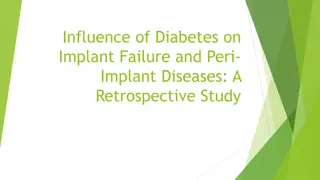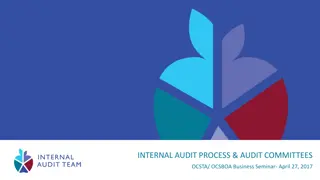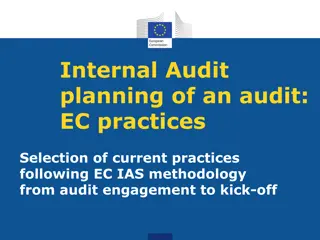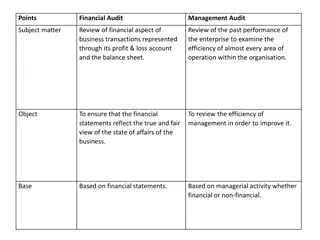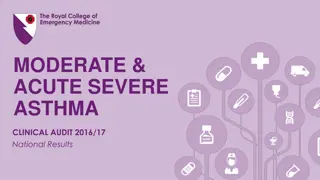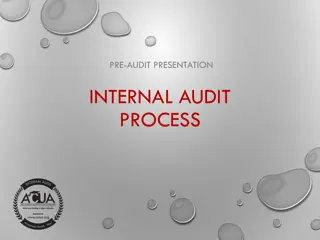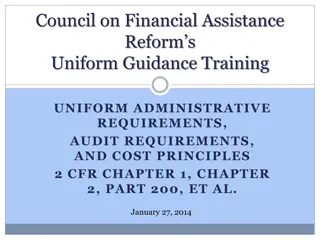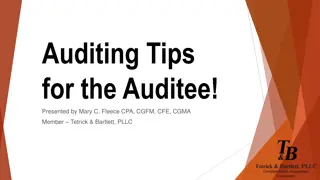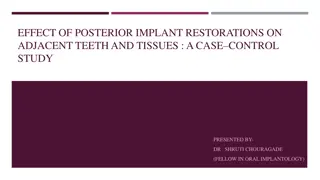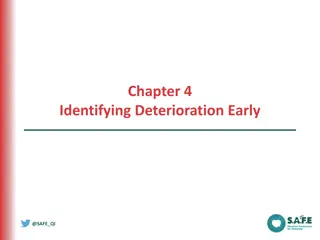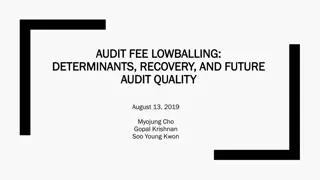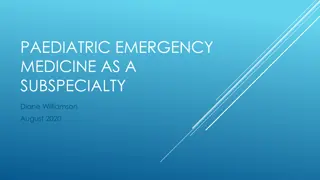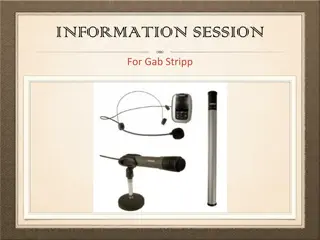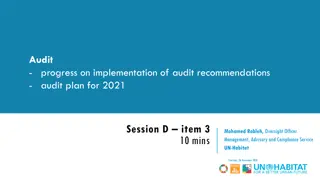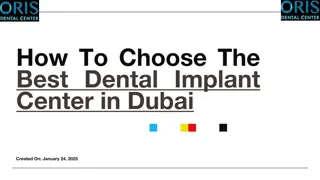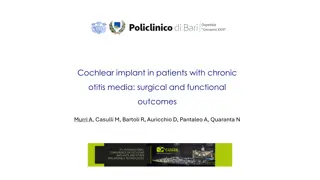Scottish Paediatric Cochlear Implant Service Audit
This audit explores the safety of anaesthesia in the Scottish Paediatric Cochlear Implant Service, focusing on reasons for the audit, data collected, age distribution of patients, causes of deafness, and comorbidities. The retrospective case note review analyzed operations in patients aged under 16, providing valuable insights into anaesthesia practices and patient profiles.
Download Presentation

Please find below an Image/Link to download the presentation.
The content on the website is provided AS IS for your information and personal use only. It may not be sold, licensed, or shared on other websites without obtaining consent from the author.If you encounter any issues during the download, it is possible that the publisher has removed the file from their server.
You are allowed to download the files provided on this website for personal or commercial use, subject to the condition that they are used lawfully. All files are the property of their respective owners.
The content on the website is provided AS IS for your information and personal use only. It may not be sold, licensed, or shared on other websites without obtaining consent from the author.
E N D
Presentation Transcript
Scottish Paediatric Cochlear Implant Service An Audit of Anaesthesia Safety Chris Hawksworth Consultant Anaesthetist Crosshouse Hospital Kilmarnock
Scottish Cochlear Implant Service Service run by Cochlear Department and team of 2 surgeons at Crosshouse Hospital Anaesthesia required for both MRI/CT/ABR and then Cochlear Implant 3 - 5 hour procedure (bilateral) If anaesthetist unhappy with patient -> RHSC Glasgow for operation
Why do this audit? Departmental reasons Little evidence on anaesthesia safety Yeh et al, 2011 Laryngoscope 121: 2240-2244 National service at a DGH No outcomes data for anaesthesia
Why do this audit? Personal reasons Balotelli syndrome A few ex-prems still on home oxygen Noted some infants had occ. VEs 8 kg infant developed runs of broad complex arrhythmia intra op
The audit Retrospective case note review 2007 -2012 Identified 306 CI ops in patients aged <16 Obtained records for 256 ops
Data collected Induction of anaesthesia ETT tube Drugs used Pain scores PONV Complications from anaesthetic chart recovery notes ward notes Age Cause of deafness Co-morbidities Operation Uni or bilateral Re-do
Age distribution paediatric Cochlear Implants 60 50 40 30 20 10 0 1 2 3 4 5 6 7 8 9 10 11 12 13 14 15 16
Cause of Deafness Syndromic Deafness Wardenburg Pendred Ushers Mohr Tranebjaerg JLN syndrome Neurological disasters Meningitis, CP/ICH Connexin gene abnormality Congenital (non-syndromic) The rest, cause unknown 18 5 11 1 1 3 26 22 18
Comorbidities Neuro-developmental Ex-premature Cardiac Others 42 20 5 3
Type of Procedure 168 children had 256 Cochlear Implant ops 157 unilateral implants 59 bilateral 19 redo
Anaesthetic management Premeds LA cream (all but 43 planned gas inductions) 26 + vallergan + pethidine 17 + vallergan 12 + benzodiazepine All GAs 40% inhalational induction 60% iv, all but 25 cases used propofol All anaesthetics given by Consultant or SAS
Anaesthetic management ETT All cases intubated Uncuffed Cuffed Maintenance Des 34 Air 197 TCI propofol (16 yr old) 77% 23% 11 cases microcuff tubes Iso 45 N2O 58 Sevo 175
Anaesthetic management Antiemetics Ondansetron/dexamethasone/cyclizine/stemetil alone or 2 combined 43 none at all (?vallergan premed) Analgesia pre-incision 1% lignocaine + 1:80K adrenaline to skin Paracetamol/diclofenac Morphine/fentanyl/remifentanil/pethidine
PONV and Pain Vomiting None 1 -10x Not recorded 2 104 150 Pain scores (max) Zero 1 2 3 Not recorded No pain scores > 2 for more than 2 hours 62 29 12 3 150
Complications Anaesthetic complications None recorded Something noted 222 34 cases Classified complications as Airway Respiratory Cardiac Recovery Others 10 4 9 3 8
Airway ETT in RMB changed to smaller size (4.0) ETT dislodged intraop - reintubated ETT suctioned secretions ++ Laryngospasm (3) 2 reintubated, 1 had stridor post op ETT changed in AR incorrect size (6)
Breathing IPPV with ambubag in recovery (2) Desaturation on induction, sputum ++ Desaturation + bradycardia at induction Abandonned (returned weeks later no problems)
Cardiac/Circulation Atropine for bradycardia <60 (3) Ventricular arrhythmias (4) GTN infusion (?why) Phenylephrine (hypotensive) Metoprolol (tachycardia)
Recovery Delayed recovery 2 - 3 hours Too much morphine (2) (Locum) Doxapram (1)
Others Tooth dislodged Blister at iv site iv access issues 3 Temp 38.2 intra-op No midazolam available for premed Coughed up blood in recovery
Complications 1 case abandonned, all others safely completed Small children - laryngospasm Unexpected respiratory infections Patients family travel a long way ?Reluctance to own up to URTI Cardiac arrhythmias LA toxicity
Incidence of anaesthetic complications 36 complications in 256 cases Most considered minor Potentially life threatening Yeh et al (2011) 14/256 = 5.5% 6.5% Open to interpretation Data not complete; 50 cases unseen
Who dont we anaesthetise at Crosshouse? Problem Rationale Leopard syndrome, pulmonary stenosis (operated) ? Resolving HOCM Sequential CI done at XH as cardiac condition OK'd by cardiologist Cornelia de Lange syndrome, cleft palate, tracheal diverticulum, laryngo-malacia , stridor Respiratory physician at referring hospital concerned; no HDU beds at XH Charge syndrome, repaired cleft lip and TOF, WPW XH anaesthetist declined - lack of PICU Ex-prem 23wk, chronic lung disease, Marked desaturation after CT/MRI, XH anaesthetist decided RHSC safer. Charge syndrome, repaired cleft lip and TOF, WPW, ex-prem 24 wk, Some upper lobe collapse on CXR, LMA used for CT ? Aspiration Bronchopulmonary dysplasia and scoliosis, CP previous diff intubation, ?Pierre Robin too high risk for XH, no HDU Being treated for ALL at time of CI Increased risk of infection therefore done at RHSC
Summary The majority of children for cochlear implant surgery can be anaesthetised safely in a DGH setting. Support from RHSC occasionally needed Care should be taken to ensure full recovery from recent URTIs. Laryngospasm still an issue in infants Local Anaesthetic toxicity
